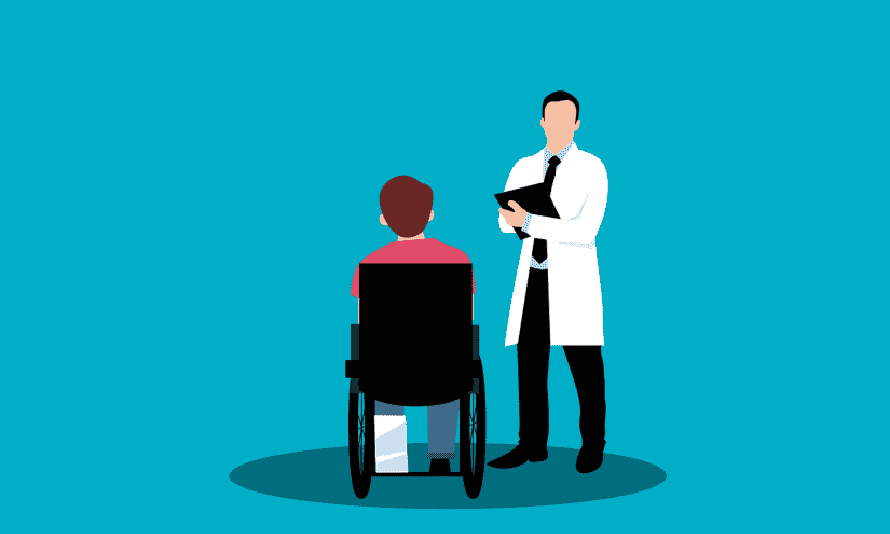You may be entitled to compensation if you or someone you love suffered a bodily injury because of another person’s recklessness, malice, or negligence. Based on this, your personal injury claim will be considered valid only if you have actually sustained an injury that is considered “serious” enough to meet the minimum injury threshold set out by law. New York Insurance Law §5102(d) describes the types of injuries following a motor vehicle accident that qualify for New York’s serious injury threshold.

You may be entitled to compensation if you or someone you love suffered a bodily injury because of another person’s recklessness, malice, or negligence. Based on this, your personal injury claim will be considered valid only if you have actually sustained an injury that is considered “serious” enough to meet the minimum injury threshold set out by law. New York Insurance Law §5102(d) describes the types of injuries following a motor vehicle accident that qualify for New York’s serious injury threshold.
Serious Injury Threshold in New York
Serious injury under section 5102(d) of the New York State Insurance law is anything that meets the following conditions after a motor vehicle accident:
- Death
- Severe dismemberment
- Dismemberment
- Loss of fetus
- Fractured bones
- Permanent loss of use of body system, function, member or organ
- Permanent consequential limitation of a member or organ
- Significant limitation of use of body system or function
- Impairment or medically determined injury of a non-permanent nature that prevents an injured person from performing those material actions that used to constitute their customary or daily activities for not less than 90 days in the 180-day period following the accident or injury
Explaining Criteria Mentioned in the Serious Injury Threshold
Most aspects of the definition are straightforward except a few. The more ambiguous categories are explained here:
1. Permanent loss of the use of a body organ, member, function, or system
Substantial limitation is not enough in this category. There should be a permanent loss of use. For instance, moderate loss of use of the lumbar spine will not qualify while permanent muscle damage in the right or left eye would.
2. Permanent consequential limitation of the use of a body organ or member
There should be proof of permanent or significant limitation while total loss of use is not needed. For instance, a rotator cuff injury inhibiting the ability to move can be treated as a permanent consequential limitation.
3. Significant limitation of a body function / system
This category doesn’t require permanent or total limitation. The limitation needs to be more than minimal. For instance, hearing loss for more than 30 months following the car accident satisfies this criterion. Correlating with this, 10% spinal impairment limitation doesn’t qualify as a serious injury.
4. Non-Permanent impairment for 90 days immediately following the collision in a 180 day period
This category involves looking at a person’s inability to carry out those activities that they used to do for a minimum of 90 days in a 180 days period immediately following the collision. Generally, this category focuses on the victim’s employment history. It may also involve lack of undisturbed sleep or not being able to perform household duties. The limitations don’t need to necessarily exist for consecutive 90 days.
Factors Involved in a New York Serious Injury Claim
It can be difficult to prove the various criteria defined in the New York serious injury threshold. The defendant’s attorney will surely try to interpret the definition in a manner that best fits their case and purpose. These are a few things an experienced attorney will recommend when you are trying to prove a serious injury claim:
1. Medical testing
Medical testing is held in high regard by the court when hearing a serious injury claim. You should seek medical attention for your injury if your injury is serious enough. The judge will look at the medical evidence showing the extent of the injury, your treatment, and rehabilitation process. You should keep clear documentation of the medical treatment. However, it is not necessary that documentation on its own will be enough to prove the serious injury claim.
2. 90/180 rule
This rule is often used for assessing the severity of an injury following a vehicle accident. The rule stipulates that the plaintiff can move forward with a claim if they can present proof that the injuries left them unable to perform certain daily tasks for a minimum of 90 days (whether consecutive or inconsecutive) in the 180 days immediately following the injury.
3. Continued treatment and testing
Medical attention plays a major role in determining the final result of the case. The Court may ask you to prove that you are getting continued treatment and testing from your medical provider. They may call on the medical expert for testifying on your evidence for determining if the doctor’s diagnosis and treatment meets the serious injury threshold.
4. Clear connection between the incident and the injury
The claim should show that there is clear connection between the accident and the injury. A statement from the medical provider may not always be enough. Another medical expert may be called in for questioning the manner and methodology used by the medical provider for arriving at the conclusion.
5. Pre-existing conditions
Pre-existing conditions can complicate a case. Your medical provider will be asked to submit testimony that proves the pre-existing condition is not linked to the problems associated with injuries because of the accident.
Types of Injuries Qualifying for Serious Injury Threshold in New York
These are a few types of injuries that qualify for serious injury threshold in New York:
1. Spinal cord injury
Back pain something that cannot be easily avoided. Trauma during a vehicular accident is a common cause for severe spinal cord injury. Consequences of severe trauma to the spinal cord can have devastating effects. It can leave a victim partially or completely paralyzed. In most cases, spinal injury results in chronic and debilitating pain as well. You won’t be able to enjoy the same quality of life as before.
Not to mention the financial toll arising from spinal injuries is staggering. Cost of medical attention, personal assistance, and rehabilitation following a spinal cord injury can add to the thousands. You may also suffer a setback from not being able to work.
On an average, a spinal cord injury costs the victim more than $340,000 due to loss of motor function and over $1,000,000 in case of tetraplegia as per the National Spinal Cord Injury Statistics Center. Costs range from $42,000 to $184,000 for each subsequent year depending on the severity of the injuries.
2. Burn injury
Burn injuries are painful with a lengthy recovery and rehabilitation process. There are several kinds of accidents which can result in burn injuries. Burn injuries are usually not that common in vehicular accidents. However, when they occur, they can result in extremely painful injuries and expensive treatment costs. These include:
- Initial hospitalization
- Physician fee
- Follow-up costs
- Reconstructive surgery cost
- Lost earning
- Rehabilitation cost
- Pain and suffering
The physician fee and initial hospitalization cost can amount to $200,000 for a burn victim that suffered injuries in one third of their body.
3. Other serious injuries
Traumatic and catastrophic injuries can result in life-altering and severe damage. They often require immediate treatment and surgery. Motor vehicles, depending on the circumstances, can result in catastrophic personal injuries. Head injuries are common traumatic injuries. They are also particularly dangerous because of the potential for brain injury. These injuries generally result in significantly high medical bills and rehabilitation costs. They also involve pain and suffering and anxiety for the families.
Serious Injury Threshold Exceptions
New York State’s ‘serious injury’ threshold doesn’t cover motorcycle accident injuries. This means that you can sue the at-fault party if you were involved in a motorcycle accident with only minor damages and injuries, such as:
- Lost wages
- Medical bills
- Pain and suffering
- Emotional distress
You can claim punitive damages as well in certain cases. These are meant as punishment for the reckless and malicious behavior of the defendant. However, you should understand that punitive damages are not meant to make the plaintiff whole.
New York is a No-Fault State
The insurance company is responsible for pay for any medical bills and a percentage of lost wages if you were involved in a motor vehicle accident. Victims can apply the state’s No-Fault Law for receiving damages from the no-fault insurance company that insured the vehicle. New York is among 13 other states that recognizes no-fault.
Victims need to meet one of the two conditions if they want to obtain compensation in addition to the basic payment of lost wages and medical bills through no-fault insurance:
- A serious injury occurred as per Article 51 of the New York State Insurance Law
- Economic losses are in excess of basic economic loss. This means you should have suffered a loss of more than $50,000 in lost wage payments and medical bills (combined)
You may be able to file for a personal injury claim as well while claiming benefits of no-fault. This depends on the extent of the injury.
You need to meet New York State’s serious injury threshold to file a lawsuit. The lawyers defending the responsible driver will probably do everything possible to dismantle the claim by proving that you don’t meet the serious injury threshold.
Talk to a Dedicated New York Personal Injury Attorney Today
Serious injury threshold laws can be complicated and confusing, especially when you are still recovering from the shock and trauma of a car accident. You could be wrong if you presume you or your loved one doesn’t have an injury that qualifies under this.
The experienced attorneys at Rosenberg, Minc, Falkoff & Wolff, LLP are equipped to handle all types of serious personal injury lawsuits. We have helped many New Yorkers recover large settlements and verdicts when they assumed their injuries may not even qualify for a claim. To set up a complimentary consultation, call at 212-344-1000 or reach us online.


